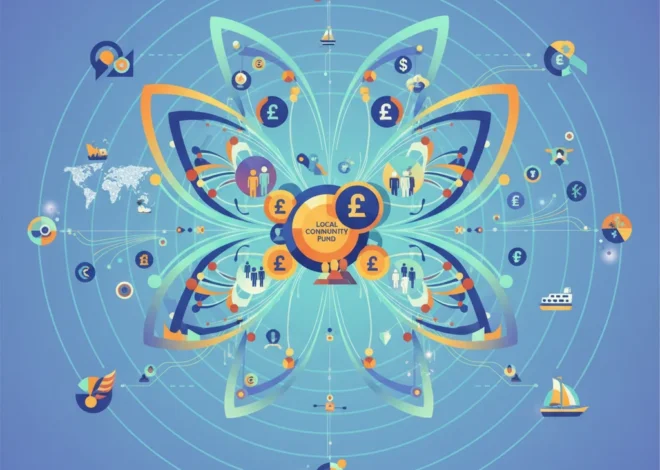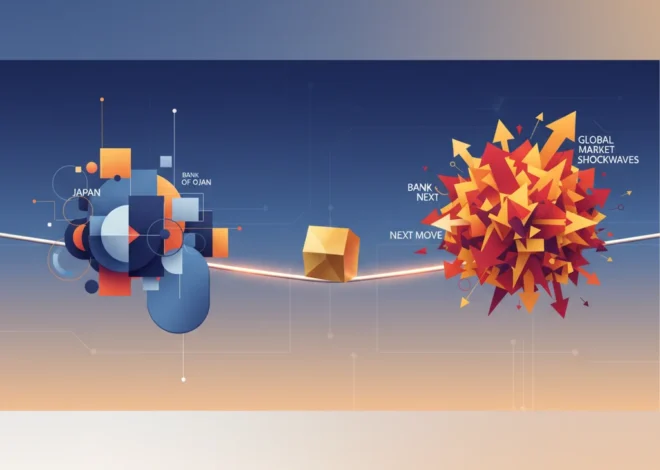
The Investor’s Crossword: Decoding the Puzzles of the Global Economy
Every morning, thousands of astute minds settle in with a cup of coffee and the latest edition of the Financial Times, turning not to the headlines, but to a grid of black and white squares: the FT Crossword. On the surface, it’s a game of wit and vocabulary. But look closer, and you’ll find a powerful metaphor for navigating the complex, interconnected world of modern finance. Like a cryptic crossword, the global economy presents a series of clues—some straightforward, others bewilderingly opaque. Success in both domains requires more than just knowledge; it demands pattern recognition, strategic thinking, and the ability to see how disparate pieces fit together to form a coherent whole.
For investors, finance professionals, and business leaders, the daily challenge isn’t just about solving for ‘X’ in a clue, but about deciphering market signals, anticipating economic shifts, and positioning assets for growth. The principles used to conquer a complex puzzle like the FT Crossword Number 18,224 are the very same ones that underpin savvy investing and financial strategy. It’s about understanding the long, overarching themes and the smaller, intersecting details that create the complete picture.
The “Across” Clues: Understanding Macroeconomic Megatrends
In a crossword puzzle, the “across” answers often form the foundational structure. They are the long words that span the grid, providing the context and letters for many of the shorter “down” words. In the world of finance, these are the macroeconomic megatrends—the sweeping forces that shape the entire landscape.
These are the big-picture questions that every investor must consider:
- Interest Rate Policy: The decisions made by central banks like the Federal Reserve or the European Central Bank act as the puzzle’s master key. A slight change in interest rates can ripple through the entire stock market, affecting everything from bond yields to corporate borrowing costs and consumer spending. For example, the aggressive rate hikes seen globally in 2022-2023 were a clear “across” clue that the era of cheap money was over, fundamentally altering investment strategies.
- Inflation and Growth (GDP): These are the twin pillars of economics. Understanding the trajectory of Gross Domestic Product (GDP) and the rate of inflation provides the essential context for market performance. According to the IMF’s World Economic Outlook, global growth is projected to hold steady at 3.2% through 2024 and 2025, a crucial piece of data that informs institutional capital allocation. Ignoring this clue is like trying to solve the puzzle without reading the longest, most obvious hints.
- Geopolitical Shifts: Trade wars, international conflicts, and shifting political alliances are powerful “across” clues that can redefine market dynamics overnight. These events influence supply chains, currency values, and commodity prices, creating both risks and opportunities across the board.
Just as you can’t solve a crossword by only focusing on three-letter words, you cannot build a resilient investment portfolio without a firm grasp of these macroeconomic forces. They set the rules of the game and define the environment in which every other financial decision is made.
Europe's Trillion-Euro Question: Can a United Financial Front Win the Global Tech Race?
The “Down” Clues: Drilling into Microeconomic Details
Once the “across” answers are in place, the “down” clues become easier to solve. These vertical entries intersect with the larger themes, representing the specific, granular details of the market. For an investor, this is the microeconomic analysis—the process of evaluating individual companies, sectors, and assets.
This is where the real work of trading and stock selection happens. It involves asking questions like:
- Company Fundamentals: What is the health of a specific company’s balance sheet? Is its revenue growing? What is its price-to-earnings (P/E) ratio compared to its competitors? This is the equivalent of analyzing the letters you already have from the “across” answers to deduce the correct “down” word.
- Sector-Specific Trends: While the broader economy might be growing, specific sectors can outperform or underperform. The rise of artificial intelligence, for instance, has provided a massive tailwind for technology and semiconductor stocks, even during periods of broader market uncertainty. Identifying these sector-specific narratives is key to finding alpha.
- Competitive Landscape: Who are the leaders and disruptors in a given industry? A company might look good in isolation, but a new competitor with superior financial technology could completely upend its market position. This requires deep, industry-specific knowledge.
A successful investor is a master of both dimensions. They use the macroeconomic “across” clues to establish a strategic direction and then employ rigorous microeconomic “down” analysis to select the specific assets that will thrive within that environment.
The Cryptic Clues: Decoding Fintech, Blockchain, and Modern Finance
The most challenging—and for many, the most rewarding—part of a cryptic crossword is deciphering the cleverly disguised clues. An anagram, a hidden word, a double meaning; they require you to think laterally. This is the perfect analogy for the world of modern fintech and complex financial instruments.
Concepts like blockchain, decentralized finance (DeFi), and algorithmic trading are the cryptic clues of today’s market. They are not always what they appear to be on the surface, and they operate on a different set of rules from traditional banking and finance.
- Blockchain and Digital Assets: Beyond the headline-grabbing price swings of cryptocurrencies, blockchain technology offers a fundamental re-imagining of how transactions are recorded and verified. For industries from supply chain management to real estate, its potential for transparency and efficiency is a cryptic clue hinting at massive future disruption.
- Financial Technology (Fintech): Fintech has fundamentally changed how we interact with money. From robo-advisors that build diversified portfolios automatically to high-frequency trading algorithms that execute millions of orders per second, technology is both a tool and a market force in itself. A report from Grand View Research projects the global fintech market to grow at a compound annual growth rate (CAGR) of 19.8% from 2023 to 2030, a clear signal of its enduring impact.
- Complex Derivatives and Instruments: Options, futures, and other derivatives are the ultimate cryptic clues. They allow investors to hedge risk or make speculative bets, but their complexity means that misunderstanding them can lead to significant losses.
To illustrate the shift, consider how technology has reshaped investment approaches:
| Investment Aspect | Traditional Approach | Fintech-Driven Approach |
|---|---|---|
| Portfolio Management | Human financial advisor, periodic rebalancing | Robo-advisors, automated tax-loss harvesting, real-time algorithmic adjustments |
| Research & Analysis | Reading annual reports, analyst ratings | AI-powered data screening, satellite imagery analysis, social media sentiment tracking |
| Trade Execution | Phone call to a broker, manual online order | High-frequency trading (HFT), direct market access, zero-commission mobile apps |
| Access to Assets | Limited to public stocks, bonds, mutual funds | Fractional shares, tokenized real estate via blockchain, crowdfunding for startups |
Engaging with these modern financial tools requires a new way of thinking, one that values technological literacy as much as traditional financial acumen.
Geopolitical Chess at COP30: How Brazil's Climate Diplomacy is Reshaping Global Finance
Solving the Puzzle: Building Your Coherent Financial Strategy
The true satisfaction of a crossword comes when the last letter is filled in, and the completed grid reveals a web of interconnected, correct answers. A single correct answer can unlock an entire section of the puzzle. Similarly, a sound financial strategy is not a collection of random investments; it’s a coherent, interconnected plan where each element supports the others.
Building this strategy involves:
- Defining Your Goals (The Puzzle’s Theme): Are you solving for retirement, wealth preservation, or aggressive growth? Your overarching goal determines the type of clues you need to focus on.
- Diversification (Filling the Whole Grid): A diversified portfolio spreads investments across various asset classes (stocks, bonds, real estate), geographies, and sectors. This ensures that a poor performance in one area—a single wrong answer—doesn’t derail your entire strategy. It’s the financial equivalent of not getting stuck on one difficult corner of the puzzle.
- Risk Management (Using a Pencil): Every investment carries risk. Understanding your own risk tolerance and using tools like stop-loss orders or hedging strategies is like solving the puzzle in pencil, giving you the flexibility to correct mistakes without permanent damage. Studies from organizations like DALBAR have consistently shown that investors who react emotionally to market downturns significantly underperform those who stick to a disciplined plan.
- Continuous Learning (Practice): The rules of the market, like the nuances of a crossword setter’s style, evolve. Staying informed about economic trends, new technologies, and changing regulations is essential. The puzzle is never truly “finished.”
Ultimately, the financial markets are the world’s largest, most dynamic, and most consequential crossword puzzle. The clues are everywhere—in central bank statements, in corporate earnings reports, in technological breakthroughs, and in geopolitical headlines. For those willing to learn the language of the puzzle, to see the connections between the “across” and “down” forces, and to embrace the challenge of the cryptic, the rewards can be immense. It’s not just about finding the right answers, but about enjoying the process of solving the puzzle itself.
The Price of a Masterpiece: Unpacking the Economics of Basic Income for Artists


